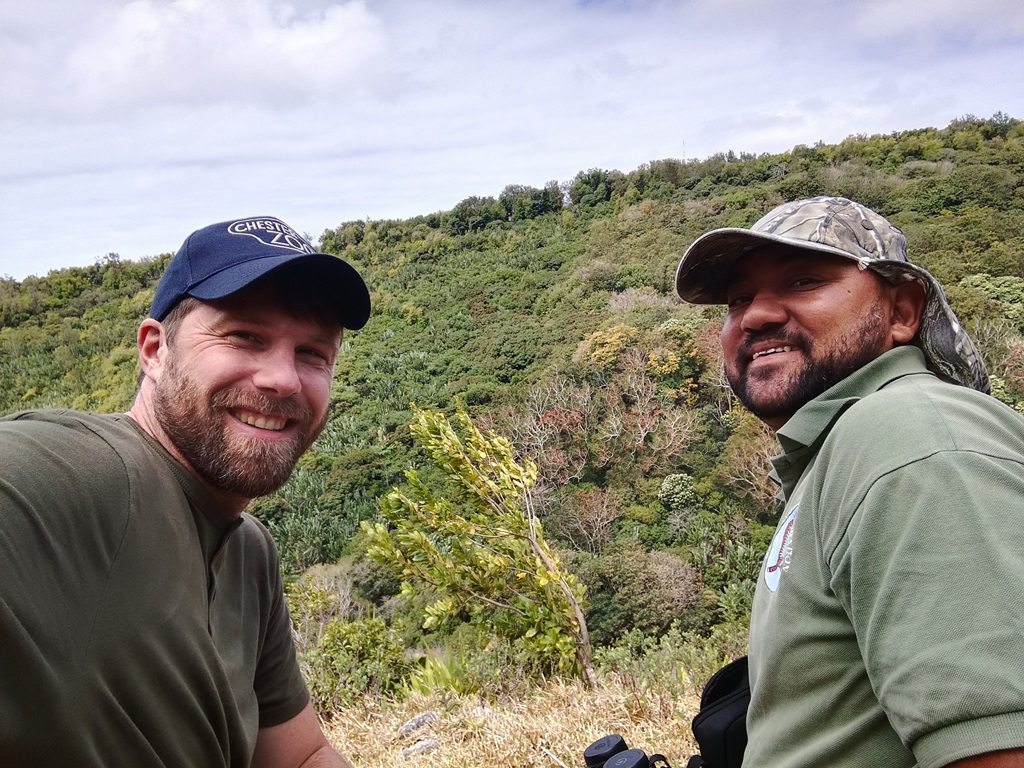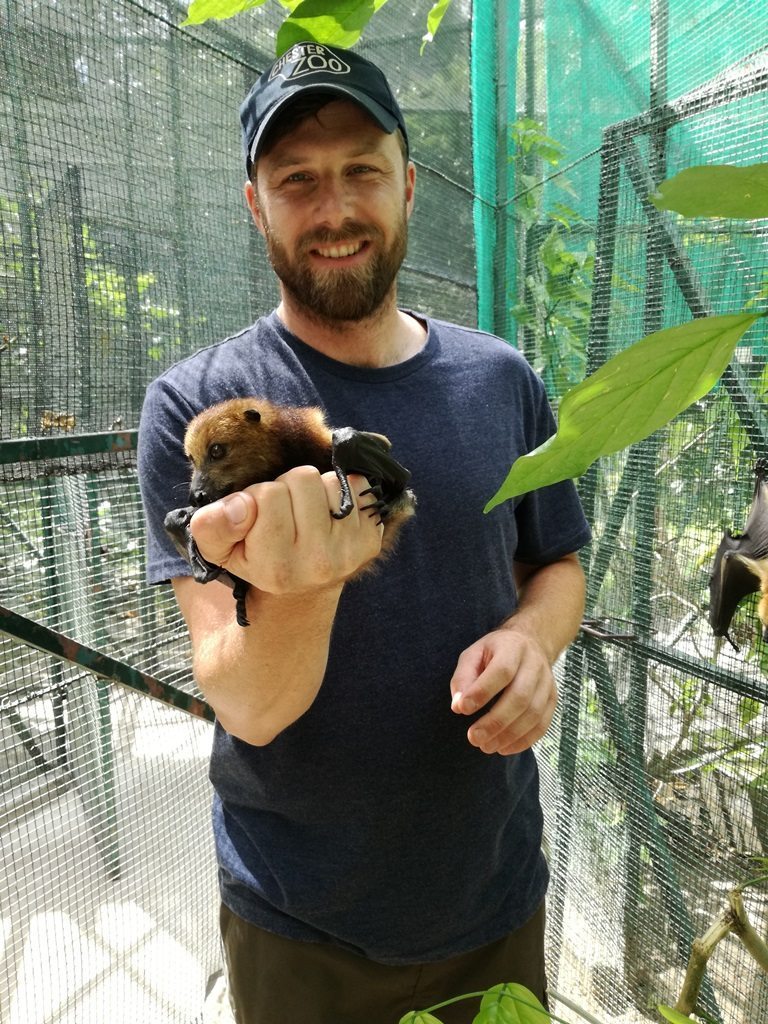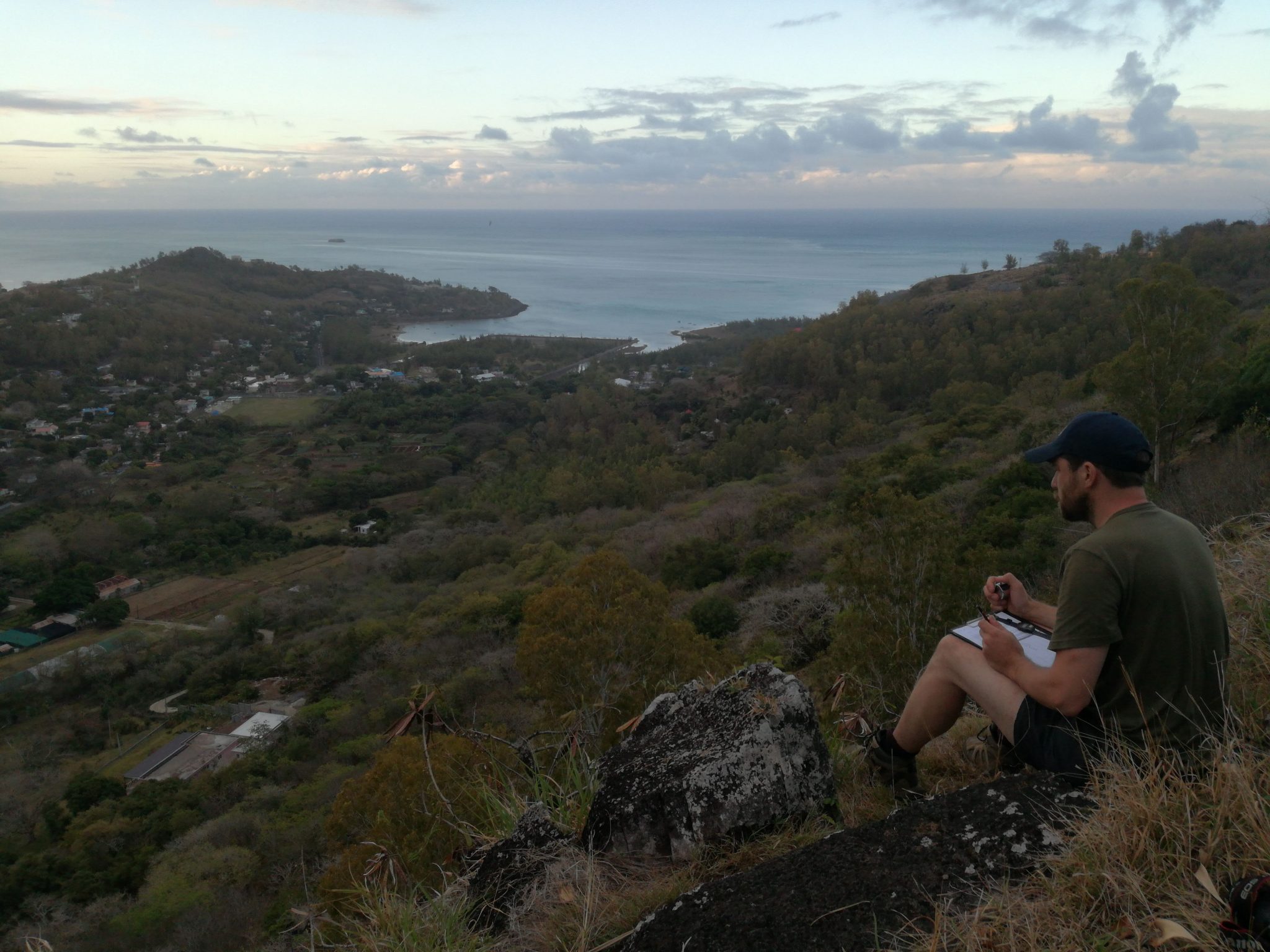We work in 80 countries across the globe to help some of the world’s most endangered animals. Working closely with many organisations we provide both funding and expertise to help the fate of species which are on the edge of extinction.
The Mauritian Wildlife Foundation (MWF) is one of the organisations we work with, helping conserve some of the endangered endemic plant and animal species of the Mascarene islands of Reunion, Mauritius and Rodrigues. These islands are located 700 km east of Madagascar. Back in the 16th century, the first settlers arrived – soon after the last dodo was killed by sailors. Many other species succumbed to the same fate and with introduction of alien species, many native species’ habitats disappeared. Today, the islands have lost most of their native vegetation and the growing human population has put increased pressure on remaining forest fragments. However, over the years some species numbers have increased including the once nearly extinct Rodrigues fruit bat.

Chester Zoo’s Twilight Team Manager and global species co-ordinator for the Rodrigues fruit bat, David White, travelled to the islands. Here he tells us more about his trip:
“The Rodrigues fruit bat was once described as ‘the rarest bat in the world’. In the 1970s the species almost went extinct as numbers dropped to just 70 bats. However ongoing conservation work and habitat protection in Mauritius – which we have supported for a number of years – together with research, education and an effective breeding programme in zoos has since seen the population steadily increase. Yet as the bats are only found in a single location on Rodrigues they are classed as critically endangered by the International Union for Conservation of Nature so monitoring their numbers is imperative. Therefore on my recent visit I worked with the Mauritian Wildlife Foundation to help conduct the quarterly bat counts across the island.

“One of the most breath-taking moments for me was standing at the top of the valley to Cascade Pigeon, one of the largest habitats for the bat on the island, where some 40 years before, the great conservationist Gerald Durrell had witnessed first-hand the plight of the Rodrigues fruit bat. He decided to create an insurance population, the first for this species, in the 1970s to ensure its survival. The founder animals came from the very valley that I saw before me and I now work with their ancestors in Chester.
“I love the Rodrigues fruit bat, they are also known as the Rodrigues flying fox because their elongated muzzles give them a distinctly fox-like appearance. The first time I experienced a wild Rodrigues fruit bat in flight was a little surreal: they looked so majestic and graceful. Roost sites chosen by the bats were in tall trees, situated on steep sided valleys which offered them shelter from the elements. Some of these roosts were very difficult to access due to the steep sided valley and the undulating terrain.
“To get an idea of the wild Rodrigues fruit bat population, evening dispersal counts are carried out simultaneously at each roost across the island. I took part in roost counts in three different locations. It was so peaceful, perched at the top of the cliff overlooking the valley below, bats flying past as they left the roost sites to feed. It really is vital that we succeed in our attempts to conserve this wonderful species.


“So how do you conduct a roost count? Well an imaginary line was visualised from the cliff top to a building in the distance. When a bat crossed this line it was counted as leaving the roost; any returning bats were subtracted and the count finished when it was too dark to see any bats. I had the privilege of witnessing some pups, still dependent on their mothers. It still amazes me how the female bats can fly with pups attached to them.
“During my time on Rodrigues Island, I visited the nature reserve Grande Montagne one of the last remaining strands of forest on the island. The reserve has undergone allot of restoration work to help protect the native and unique flora and fauna and the MWF has overseen the planting of over 150,000 native plant species, whilst eradicating invasive ones. The nature reserve also provide crucial habitats for the last three surviving endemic species: the Rodrigues fruit bat, Rodrigues warbler and Rodrigues Fody.
It was a privilege to lend the skills I’ve developed here in Chester to our work in the wild witness first-hand a conservation success story.

“Back in the 70’s it was believed that this species could disappear in the wild altogether but thankfully due to the perseverance of many different organisations and the start of a very successful breeding programme the number of Rodrigues fruit bat has increased dramatically. I hope that with the brilliant work we support with the MWF the numbers continue to increase and the bats will continue to thrive in their native home.”
Staying in Mauritius
Conservationists, fruit growers, netting experts and government officials gathered for the first time in a joint effort to develop new solutions to resolve conflict between farmers and crop raiding bats.